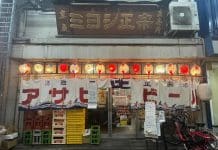A rough-pixel freeze frame of a man’s face. The camera zooms back and the image springs to life. Makoto (Kazuhiro Sano), the main character of Noisy Requiem, strolling through the homeless area of Kamagasaki. The poverty market below the railway tracks. Day laborers sitting on the curb, talking, drinking. Cut to Makoto in a park, feeding pigeons. Makoto taking the crowbar / clawhammer out of the back of his pants, killing some of the birds. Makoto lying down on a round-shaped concrete bench, ripping the head off a pigeon.
If you have the entered the theater by mistake, yes, that can happen at film festivals, it may be time to leave now.
If you stay, you will be in for a relentless 2 ½ hour onslaught on your senses. The movie, dedicated by director Yoshihiko Matsui “to all the lost souls”, as a pre-title caption says, features not only Japan’s arguably worst urban area, Kamagasaki in Osaka’s Nishinari Ward but quite an array of outsider characters living out their most extreme desires.
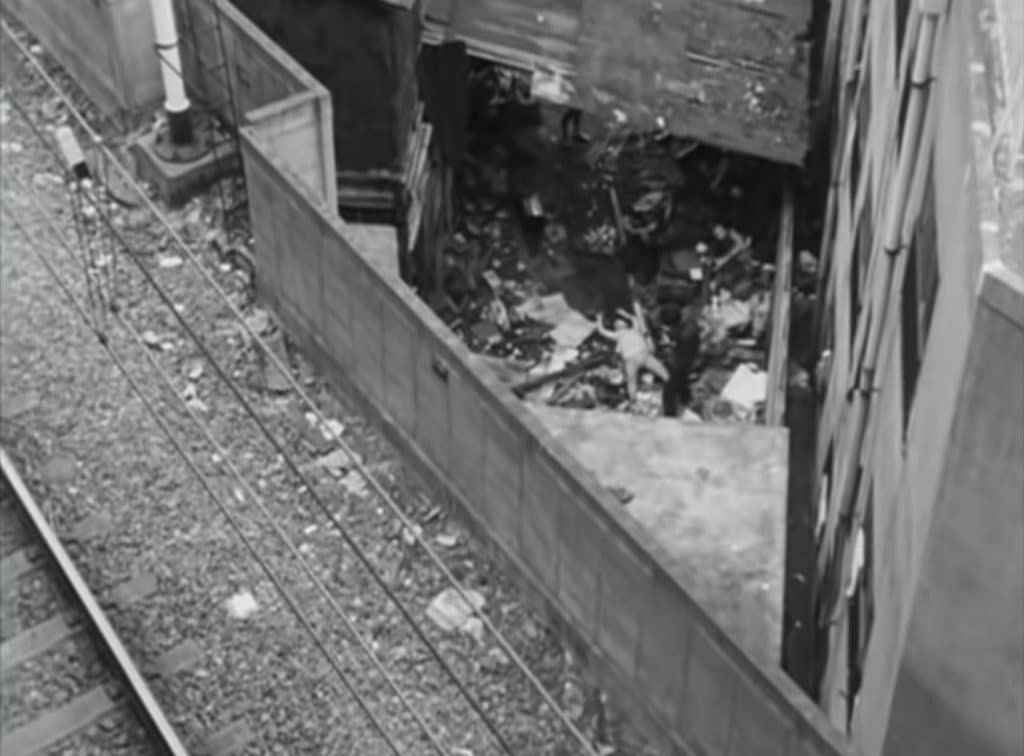
Cut back to Makoto. Murdering a woman in a filthy backyard next to a train line with his trusted and ever ready crowbar. Then, cutting some inner organs out of her, stuffing them in a bag. Murder after murder. But Makoto is not a serial killer in for the thrill of killing. He just collects the reproductive female parts he believes the mannequin doll he loves and lives with on a rooftop needs to bear him a child.
Suddenly, two high school girls walk into the picture. One is telling her dream of last night to the other. “There was a white dove,” she says, “who was hungry. But she couldn’t get any food because the other, gray, pigeons wouldn’t let her have any. So, she turned black, she became a crow, feeding on the corpses of people.”
Almost all characters in Noisy Requiem are well beyond that point of turning from an innocent, pure white dove into a vicious crow. They congregate in Kamagasaki, the last resort for the lost souls, turning against each other.
Like Makoto turns against a pair of crippled war veterans busking in the park for money. He accuses them of having “done nothing during the war” and being “dirty Koreans”. He violently attacks them with his claw hammer in a truly harrowing scene.
It later turns out that Makoto is most likely a Korean himself, deeply mourning the assassination of South Korean dictator Park Chung-hee. Park was shot by his own secret police chief in 1979. Makoto can be seen listening to the news of the assassination on the radio on his rooftop. So, at first glance, 1979 appears to be the year the movie is set in.
More likely, Park’s assassination took place during the early parts of script writing and the scene featuring the radio news just stayed on in the script as “recent event”. Nothing else in the movie indicates that it is set in any particular past. The story is all contemporary to the times it was shot.
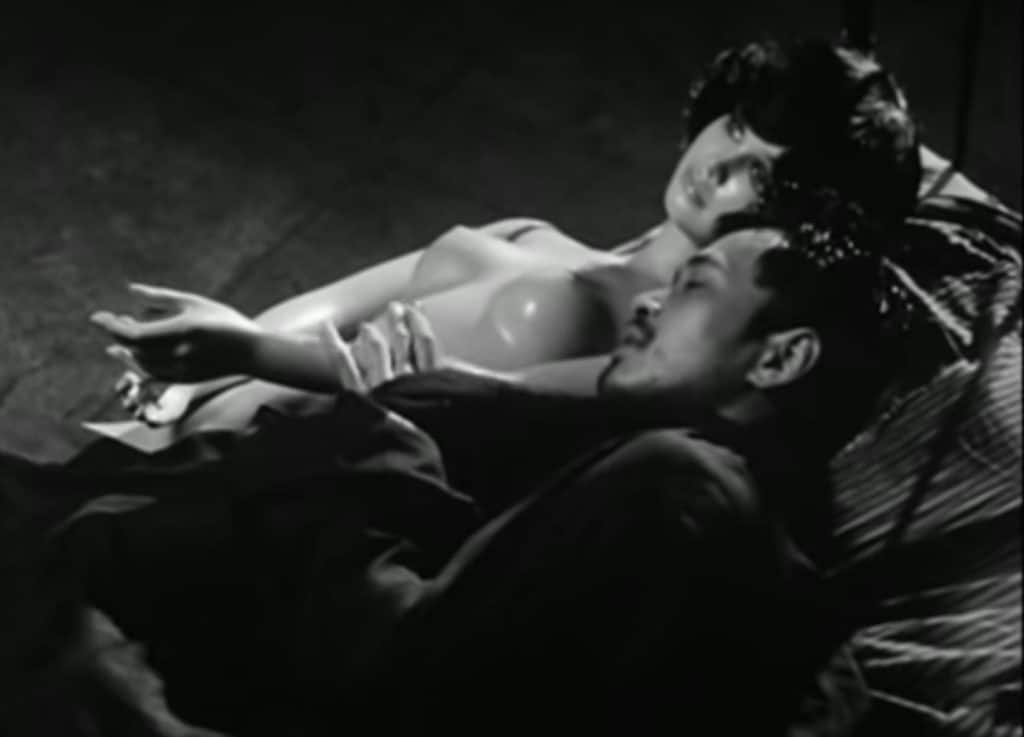
A flashback shows how Makoto found the mannequin doll, abandoned in a rice paddy. He takes her home and makes her his lover. She is the only “person” he cares for, the only one he loves with all his heart.
Makoto gets a job shoveling the dirt out of the sewerage tunnels below Kamagasaki, employed by an incestuous brother / sister midget couple.
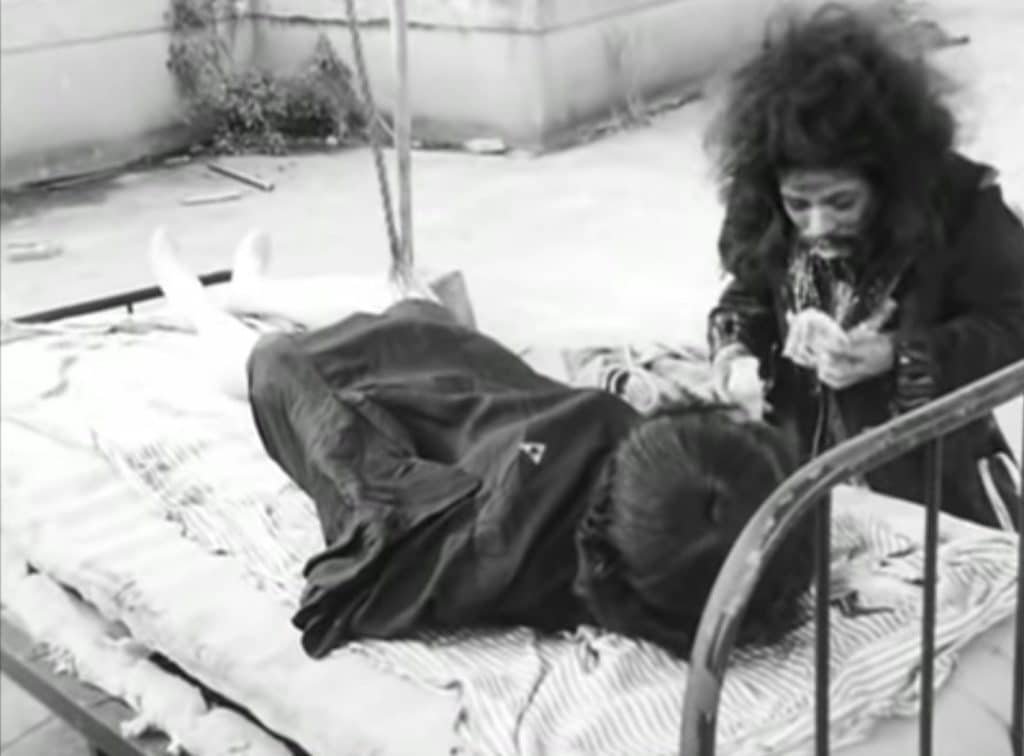
While Makoto is at work, a sex-crazed homeless bum enters Makoto’s rooftop and takes advantage of the mannequin. Leaving behind obvious traces of the abuse, Makoto prepares a cruel punishment for the invader…
Table of Contents
Noisy Requiem (Japan, 1988) 追悼のざわめき
There is no point in describing the plot any further. At times, the midget couple will take center stage, at other times a seemingly pure and innocent brother / sister pair, finally ending in tragedy. Violence begats violence. Sometimes violent scenes just spring of a simple nightly walk… you never know.
Filmed in an absolutely naturalistic way, in black and white and as gritty and rough as you can get, Noisy Requiem, Tsuito no Zawameki being the original Japanese title, does at times transgress the narrow confines of reality. Like, yes, the mannequin doll does get pregnant.
There is nothing surreal about those scenes, it’s just a bit of sidestepping reality, of taking reality to another level.
The Director: Yoshihiko Matsui
Kyoto-based film director Yoshihiko Matsui was born in 1956 in Nishinomiya, Hyogo Prefecture, right inbetween Osaka and Kobe. In his youth, Matsui joined Tenjo Sajiki,the avant-garde theater group of Shuji Terayama (1935 – 1983). Terayama was also famous as movie director, directing highly controversial films like Emperor Tomato Ketchup (1971).
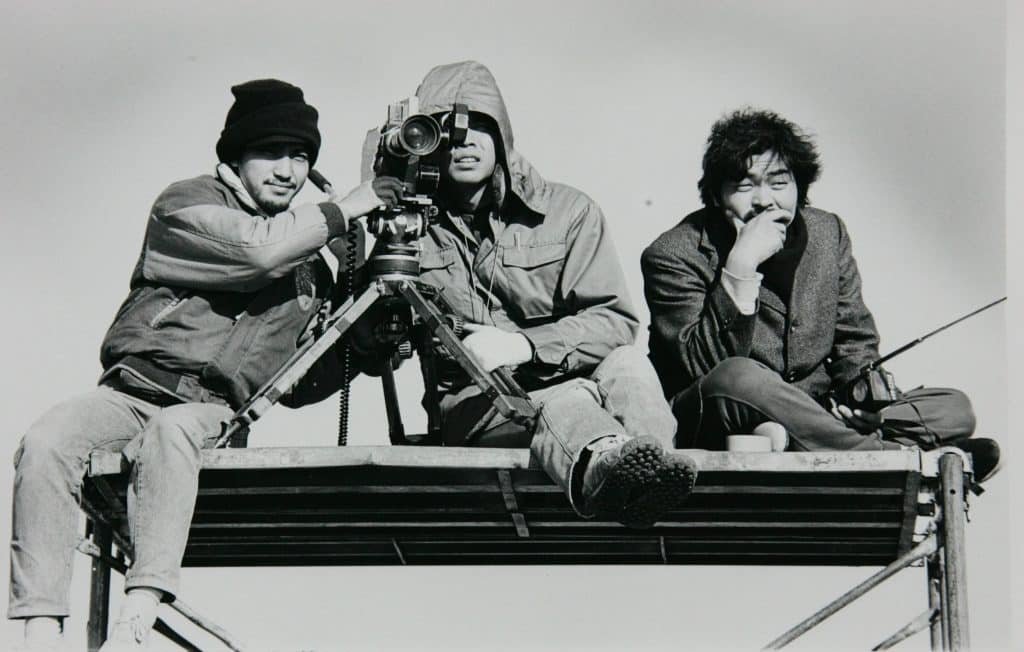
Matsui’s own start in cinema came about when he participated in founding Kyoeisha, a film-makers group led by Sogo Ishii.
Matsui was the assistant director and editor of Sogo Ishii’s high-octane breakthrough punk biker flick Crazy Thunder Road (1980).
In contrast to Ishii’s fast-charging, punk rock driven works, Matsui’s own early films were slow-paced and brooding explorations of personal relationships, inevitably leading to violent conclusions.
At his first film, the homosexual love drama Rusty Empty Can (Sabita Kankara, 1979), Sogo Ishii served as Director of Photography.
Matsui’s next film Pig-Chicken-Suicide (Tonkei Shinju, 1981) depicted the failed love story between two Korean residents in Japan.
It was his third film, Noisy Requiem, that provided Matsui with his breakthrough.
The Production
Shuji Terayama read the script before filming commenced and commented that “it would be a scandal if this script were made into a motion picture.” Terayama knew a thing or two about scandals.
Filming started in 1983, the year of Terayama’s death. Noisy Requiem was an independent production, made without the assistance of any major studio. Thus, financial troubles persisted, shooting permits were hard to get.
It took five years until the film finally premiered in 1988. The first screening took place in the assembly hall of a support organization for the homeless right in Kamagasaki. Shortly after, Noisy Requiem joined the Japanese independent cinema circuit with screenings at the (by now dearly missed) Nakano Musashino Hall cinema in Tokyo.
Main Actor: Kazuhiro Sano

While most other roles in Noisy Requiem were played by amateurs, the role of Makoto was played by an experienced professional, Kazuhiro Sano. Sano, born in 1956, was involved in all aspects of cinema, particularly in the world of pink cinema, Japanese sex cinema.
In pink movies, he rose to fame not only as a much sought after actor but also as a very prolific director and screen writer. In many cases, he wrote, directed and acted in his own pink projects, winning numerous national prizes both as actor and director.
While still a student at Tokyo’s Meiji University, his career started by acting in Sogo Ishii’s violent biker movie Crazy Thunder Road of which Matsui was the assistant director and editor.
The two of them forget a friendship in those early days, Kazuhiro Sano had major acting roles in all of Matsui’s films since. His most memorable and most intense performance being as Makoto in Noisy Requiem.
The Midgets and the Bum
Outstanding performances were also delivered by Toshihiko Hino, Mamiko Nakai and Isamu Osuga, none of them professionally trained movie actors.
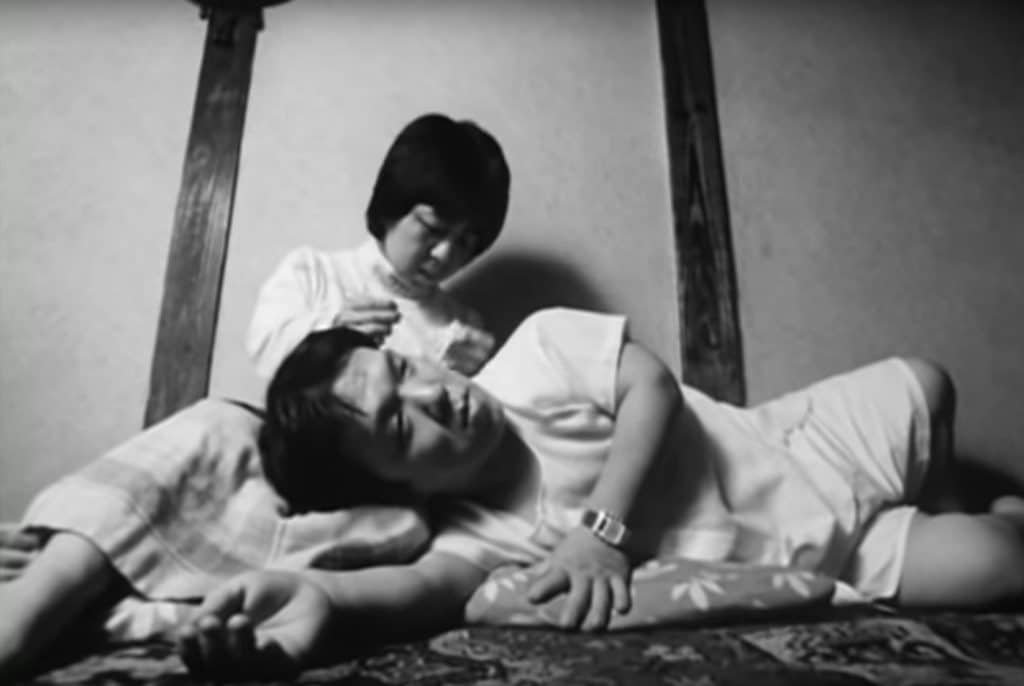
Toshihiko Hino, a man of very short stature, or, in other words, a midget, was a member of Shuji Terayama’s Tenjo Sajiki avant-garde theater group.
His character in Noisy Requiem doesn’t have a specific name, he is simply referred to as Natsuko’s elder brother. As such, he plays one of the central roles in the movie: the male part of the incestuous brother / sister pair that employs Makoto as sewerage canal cleaner.
Natsuko, his movie sister is played by Mamiko Nakai, a waitress at a Kyoto restaurant at the time of filming. Nakai, also a midget, had no acting experience whatsoever. She is absolutely convincing in her role in the movie, though.
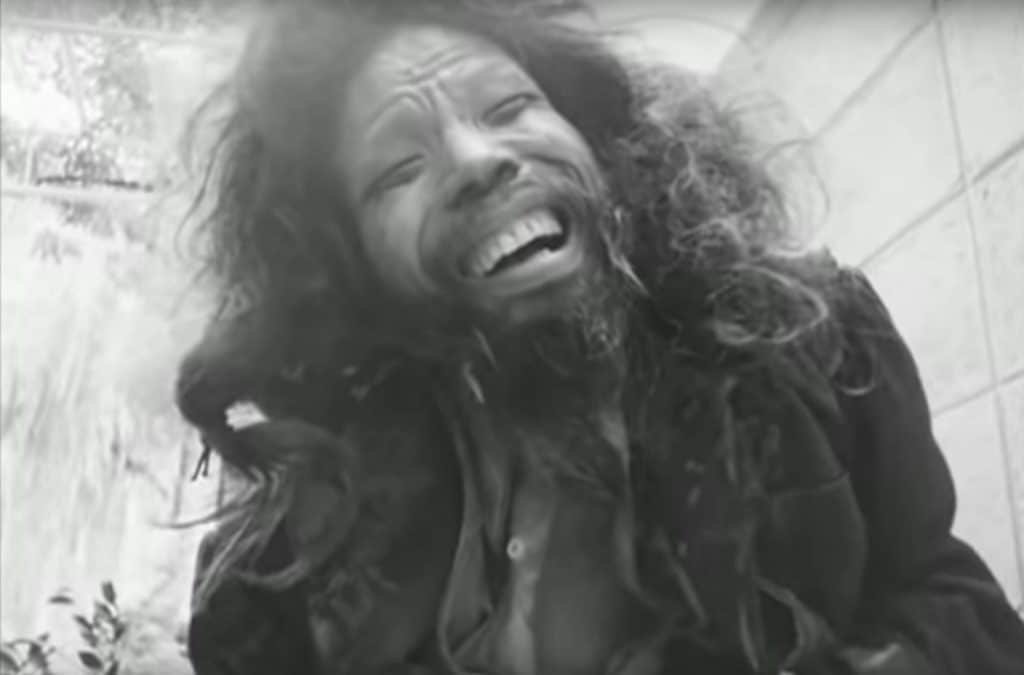
The sex-crazed bum is played by Isamu Osuga, the founder and leader of Kyoto-based butoh dance group Byakkosha. Byakkosha, active from 1980 to 1994, was one of the leading butoh dance companies, touring world-wide.
Osaka Locations
All of Noisy Requiem was filmed in Osaka. Mostly guerilla style, without any official shooting permit.
The movie is clearly centered on the Kamagasaki area of Nishinari Ward in southern Osaka. Kamagasaki being the old name of the area. After a number of riots by the resident homeless population the official name of the area was changed to Airin in 1966. The area is however still known as Kamagasaki.
At the time of filming, Airin had long been the official name of the area. Nobody in the movie talks about Airin, though, they all say “Kamagasaki” when referring to the neighborhood.

Day laborers in Kamagasaki
Kamagasaki has few distinctive architectural landmarks. It’s the people who define the area. Large numbers of day laborers, staying in one of the many doya (flophouses) when they can afford it, sleeping on cardboard boxes outside when they can’t, were the defining fixture of Kamagasaki for decades.
Noisy Requiem features many scenes of day laborers populating the run-down streets.
The stuck-in-time shopping arcades between Kamagasaki and the more touristy Shin Sekai area nearby, are also frequently in sight in the movie.
Even today, those shopping arcades like the same as in the movie. Many shops have their shutters permanently down, the ones that are open offer cheap discount goods.
The scenes of the Makoto’s murders next to rail lines were also shot in the immediate vicinity, near Shin-Imamiya and Tengachaya railway stations.
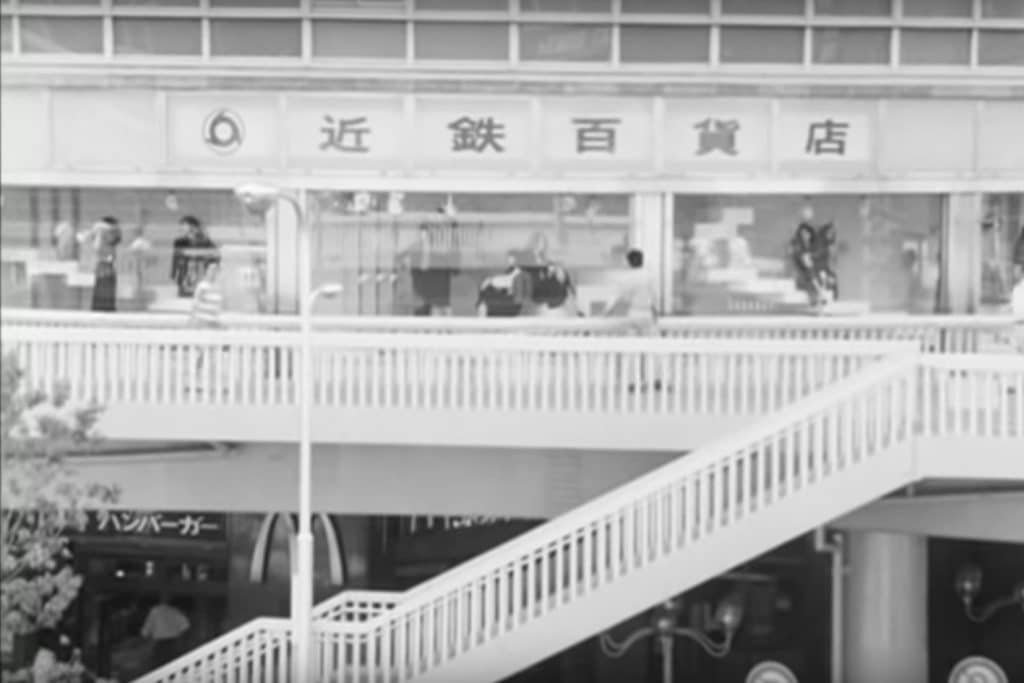
In clear view is the Kintetsu Department Store Abeno, close to Shin Sekai. Today, the department store is part of the Abeno Harukas Towers.

Tsutenkaku Tower dominates Shin Sekai and is in near clear view from Kamagasaki. The tower makes many appearances throughout the movie. In fact, the movie ends with a freeze frame of Mamiko Nakai staring out a window on the observation deck floor of the tower.
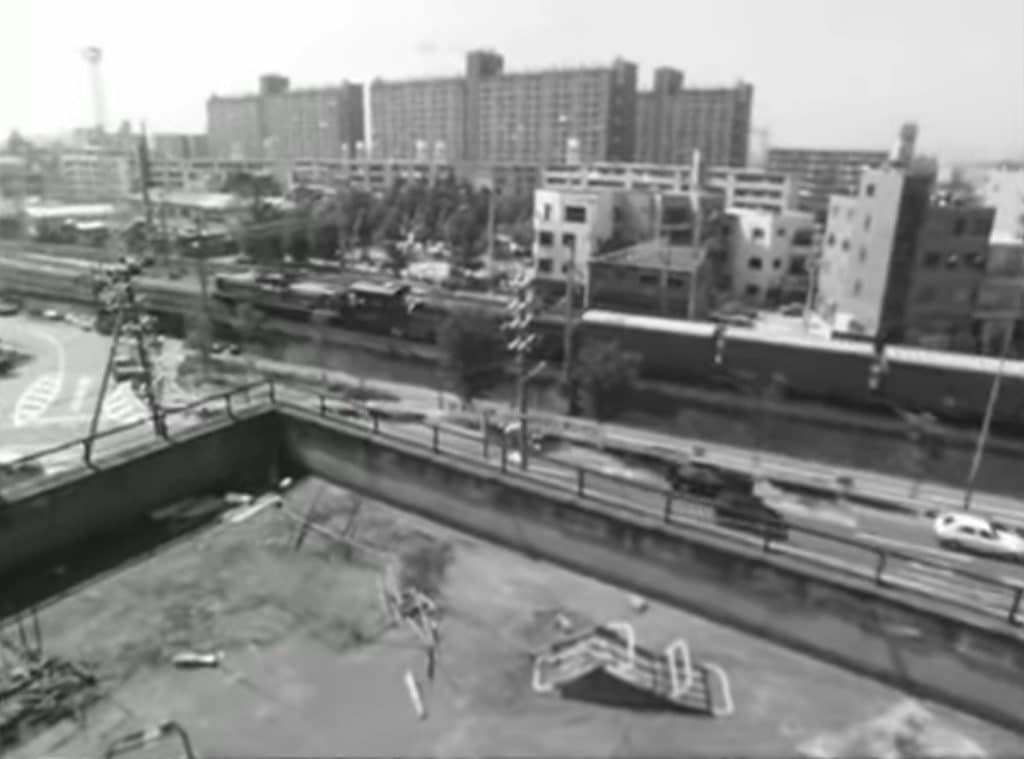
The rooftop on which Makoto lives with his mannequin doll girlfriend however is nowhere near Shin Sekai / Kamagasaki. It’s located in Nakatsu, Kita Ward, the area north of Osaka Station stretching out to the Yodo River.
At the end of the movie, that rooftop is set ablaze. In true underground film-making fashion, Matsui and his crew sneaked back to record the firefighters dealing with the blaze. Now, that’s brazen, permit-less guerilla film-making!
Reception
Noisy Requiem very quickly found its audience among Japanese punk rockers and other folks who considered themselves to be way out side of mainstream culture.
In the late 1980s and partly during the 1990s, a large network of independent cinemas still existed all over Japan. Cinemas always eager to screen challenging productions.
Starting with the shows at the Nakano Musashino Hall in Tokyo, one of the movie theaters central to that circuit, Noisy Requiem became a veritable cult movie.
The film continued to be booked over and over again by those theaters catering to offbeat audiences.
It’s very rare for a Japanese independent movie without any sort of major studio backing but in the end, Noisy Requiem covered all expenses and even made a modest profit.
The film was eventually released on DVD and can today also be found as private upload to streaming sites on the internet.
Director Matsui tacitly approves of those internet uploads. “That way, people can watch my movie with fan-made English or Spanish or Greek or whatever subtitles right at home. The film can be seen by plenty of people who would have otherwise no way of watching it. I like that, I agree with that.”
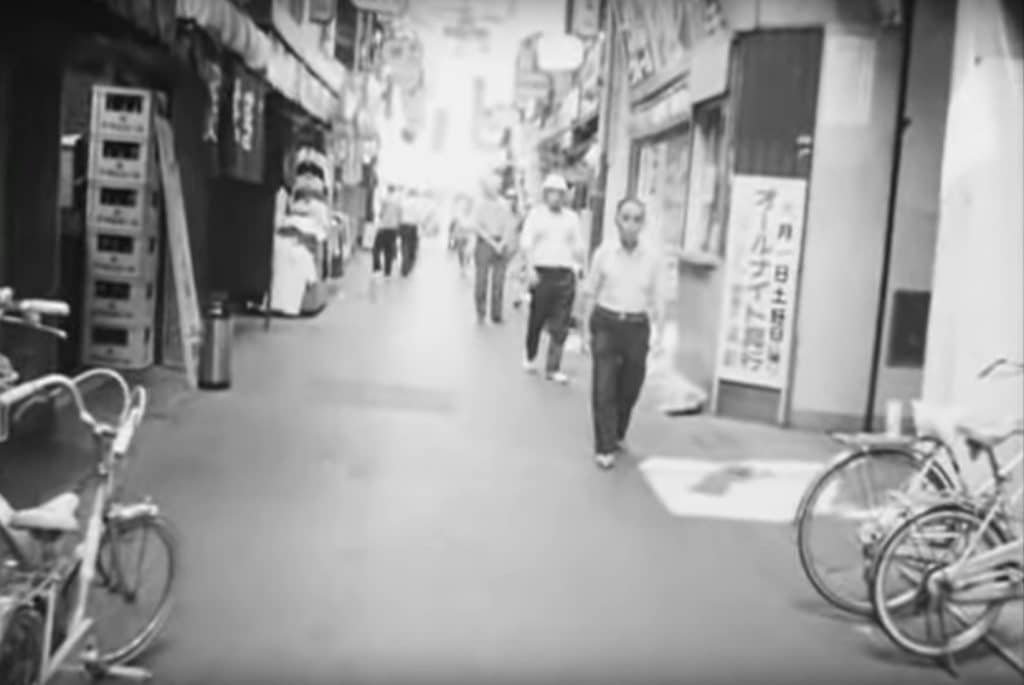
At the time of this writing, Matsui is involved in various new movie projects. He prefers to keep them secret for the time being but stay tuned.
Disclosure: The writer included Noisy Requiem in his capacity as curator for a European tour of Japanese Underground / Cyberpunk movies arranged by the Copenhagen Filmhuset (Film House) in 1998.
The resulting screenings in Denmark, Germany and Norway became the international premieres for Noisy Requiem.




